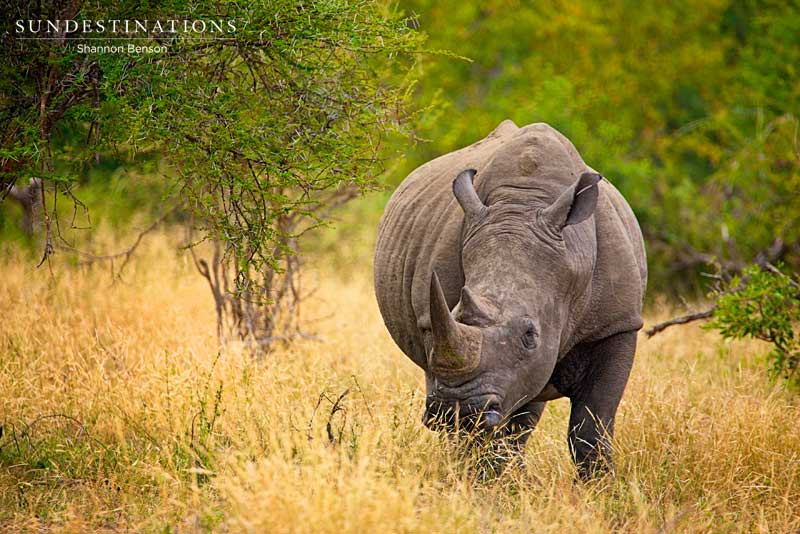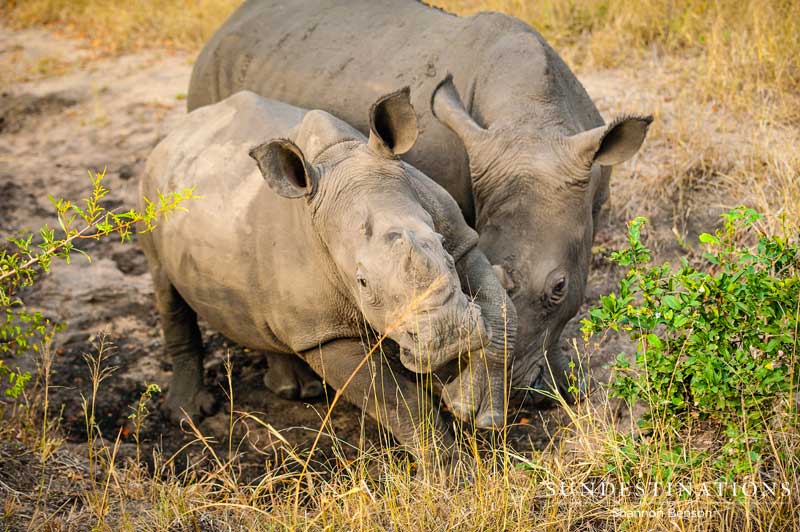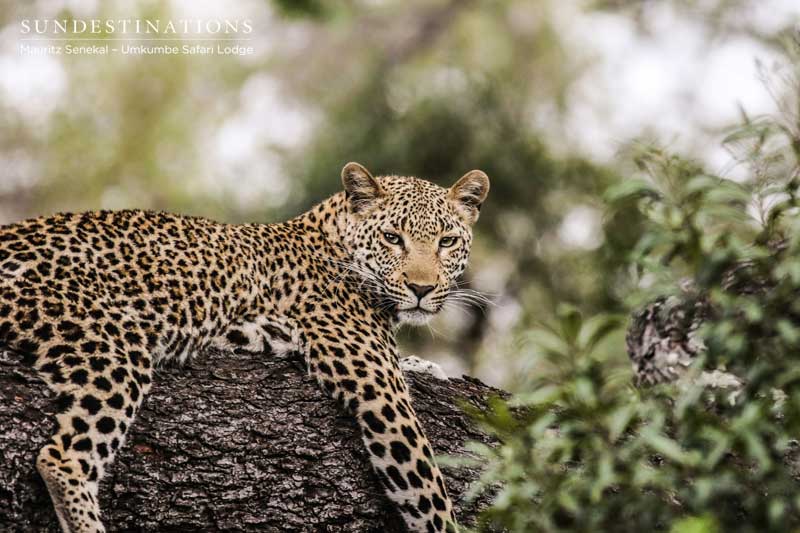
You’ve probably heard of Africa’s big five safari animals, but how much do you really know about them? Their pride dynamics, intricate communication skills and often strange behaviour is fascinating. We think it’s vital to get to know Africa’s big five safari animals before embarking on your dream safari, so we’ve compiled a rather easy, surface level get to know guide for you.
The term big five was coined by ancient hunters who labelled the below species as the most difficult animals to hunt on foot. The term became mainstream and since been used to promote these incredible herbivores and carnivores.
Without further ado, let’s introduce you to Africa’s big five safari animals.
Leopard
Leopard’s are incredibly elusive cats and tricky to spot while on safari. They’re constantly on the move and cover a wide range. They don’t belong to prides and are the ultimate safari loners. The only time you’ll see two leopards together is if it’s a mother accompanying her cub, two males fighting for territory or a leopard trying to stealing another’s kill. Being the ultimate selfish opportunistic hunters means they’ll do anything for food.
The best time to spot a leopard is shortly after a kill. They stash their kill up high in the fork of a tree for safekeeping and will feast on it for a couple of days. They eat, move down to drink and return to the kill. When you see a fresh kill in the area, you can be sure a leopard will make a hasty return. When not eating or hunting, these cats will hide out in drainage lines or deep in the thickets. They are notoriously difficult to spot!
Leopards are slender and, although mistaken for a cheetah, they’re far more heavier set and have rosette patterns on their coat (a cheetah has spots).
They really are the sleek survivors of the wild and dominate the landscape with their graceful presence. This cat is one of mystery!
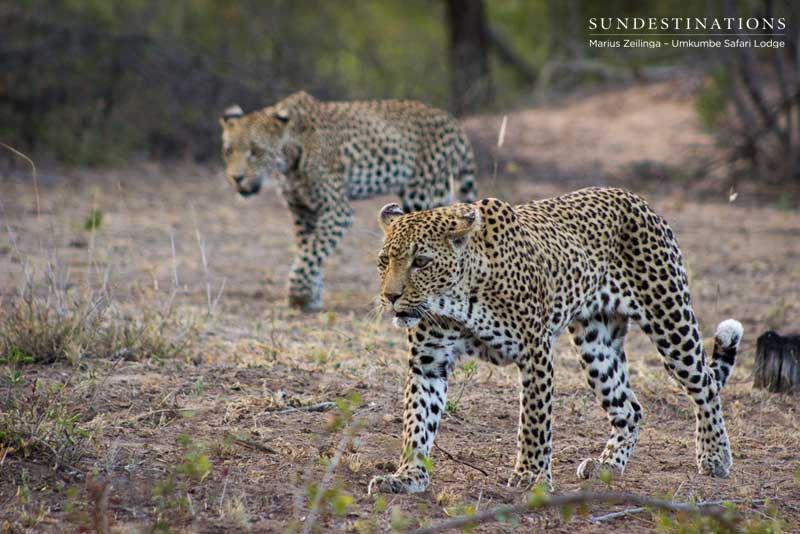
Lion
Lions live in prides comprising females, sub-adults of both sexes and an uninvolved, aloof dominant male leader (can be two). Young males lions leave the pride and form coalitions made up of other young males or pride brothers. In the pride, the dominant males protect and mark their territory.
Coalitions of young males learn how to be “warriors” by play fighting and conducting their own kills. When they’re old enough they’ll eventually mate with available females and seek prides to dominate. They will oust older dominant leaders and often kill the young cubs within a pride they want to take over. The speculation behind the cub killing is that the new leader wants to continue his own bloodline. Lions are not kings for nothing – they live a brutal and ruthless lifestyle; yet are very social and pride orientated at the same time.
Lions spend up to 20 hours a day sleeping out of the heat of the sun. After a kill, they’ll gorge themselves until they cannot move. Lions are the easiest cats to spot because they’re sedentary and will remain with their kills until the entire carcass is devoured.
Speaking of kills, lions have specialised their hunting techniques and each lion within a pride takes on a particular role in the take down. These roles/positions are similar to those on a football field. Lionesses ambush their unsuspecting victim and the other pride members will take on roles such as left wing. They rely on confusing their prey and use their strength to tackle their prey.
If you see a pride feasting on a buffalo, you’ll probably still see them there that evening on game drive. They believe in full day feasts!
Our beasts are the true kings of the jungle.
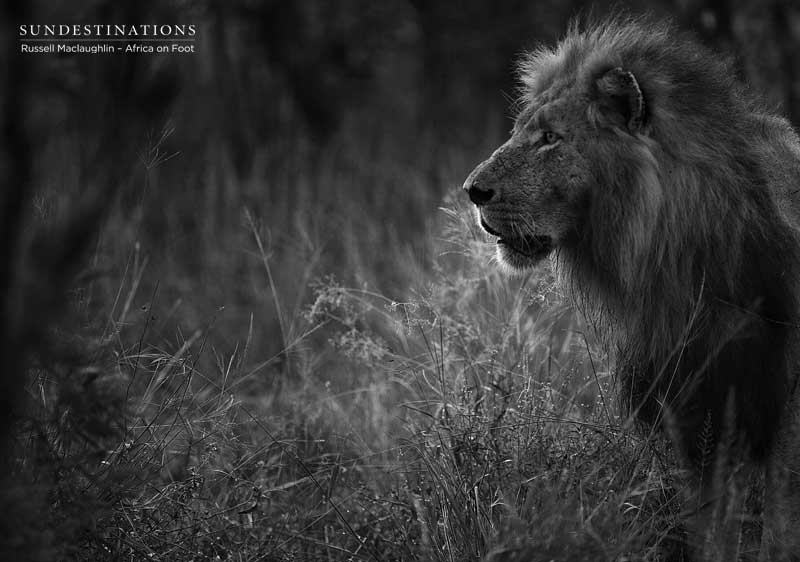
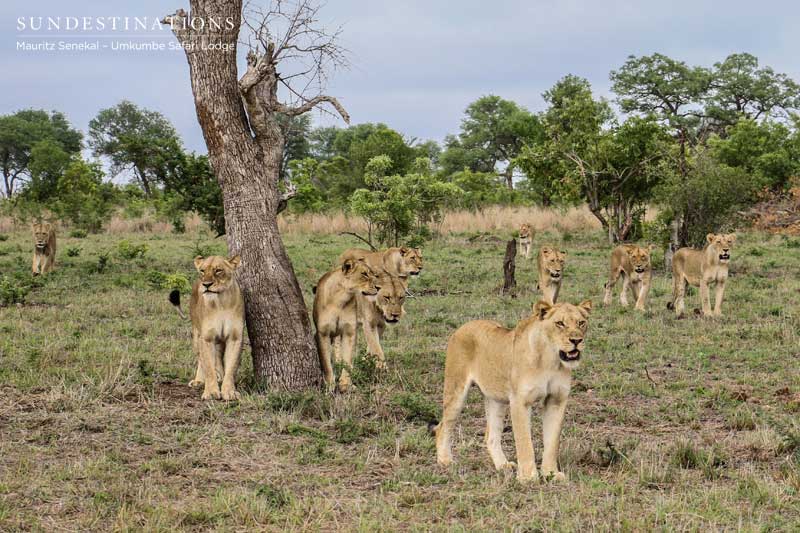
Cape Buffalo
The Cape buffalo is found throughout southern Africa. They’re one of the most dangerous of the big five because they give no indication of mood. They stare through you and can charge within an instance. With elephants, they’ll flap their ears and trumpet, lions will roar – but a buffalo will do nothing! Part of the danger is that they have an excellent memory. They won’t forget you.
Buffalo live in huge herds comprised mainly of females and their offspring. There may be a few males within a herd but they generally form their own bachelor groups. Each herd has a designated “pathfinder”.
The pathfinder leads the entire herd to succulent grazing grounds and waterholes. Buffalo need to drink twice a day because of the amount of vegetation they digest, so you’ll often spot herds on the move towards waterholes. There is a sense of hierarchy when it comes to bathing and mud wallowing. Wallowing is normally done by bulls.
Males who are past their prime are ousted from the herd and form bonds with other older males. The ageing bulls are referred to as “dagga” boys because they spend their days wallowing in mud (Dagga means mud in Zulu). Dagga boys are moody, aggressive and defensive because they don’t have the protection of the herd.
Both male and female buffalo have horns. The male’s is called a boss and has a huge helmet in the middle, whereas the cow’s is flatter. A cow’s horns extend outwards quite far and a bull’s are thick and curvy.
The rule of the wild is to never mess with a buffalo!

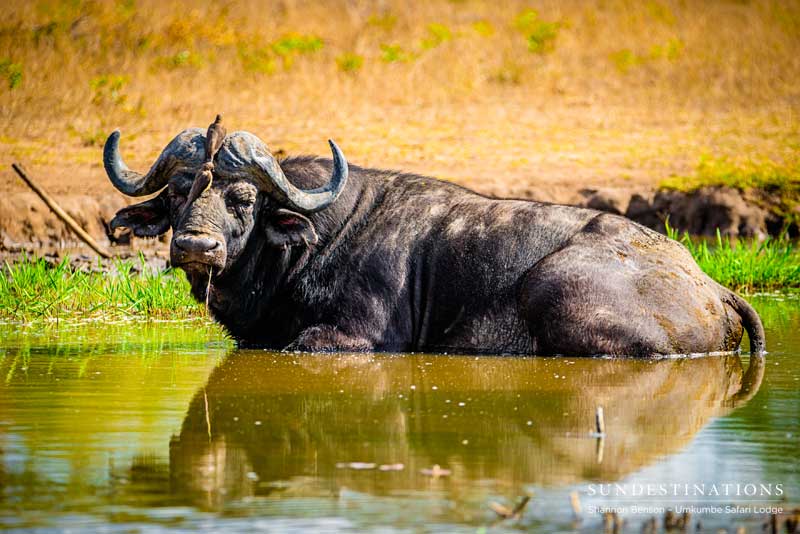
African Elephant
Elephants are highly intelligent, family orientated pachyderms. They live in matriarchal herds comprising sisters, aunts, mothers and daughters. The oldest and largest female within the herd is the dominant matriarch and she guides the herd.
An elephant’s social structure is fascinating. The daughters may break away to form their own herds when old enough, but elephants have a memory like no other and they’ll never forget their roots. Related herds will often congregate at waterholes for “catch-up” sessions. Bulls tend to form bachelor pods and breakaway shortly after adolescence, which is why you often see a handful of large bull elephants feeding together without being attached to a herd.
Cows and bulls live very separate lives and only really congregate during breeding season. The bulls don’t have the same type of bond as the females and will often fight among themselves.
All elephants have tusks. These gentle giants are either “left tusked” or “right tusked” – similar to a human’s dominant side of their body. Tusks are used for stripping bark, digging, lifting objects, gathering vegetation and for protecting their delicate trunk. Bulls use their tusks for fighting.
Elephants love water and you’ll often find them swimming and bathing in waterholes. They’re drawn to clean water and are quite particular with the water they drink – which is why they approach lodge swimming pools! Elephants have incredible dexterity when it comes to their trunks and one of their uses is to use it as a snorkel.
It has been noted, in times of drought, elephants will use their feet to dig holes in the ground to access clean and fresh ground water. This creates small mud pools which are actually used by other animals.
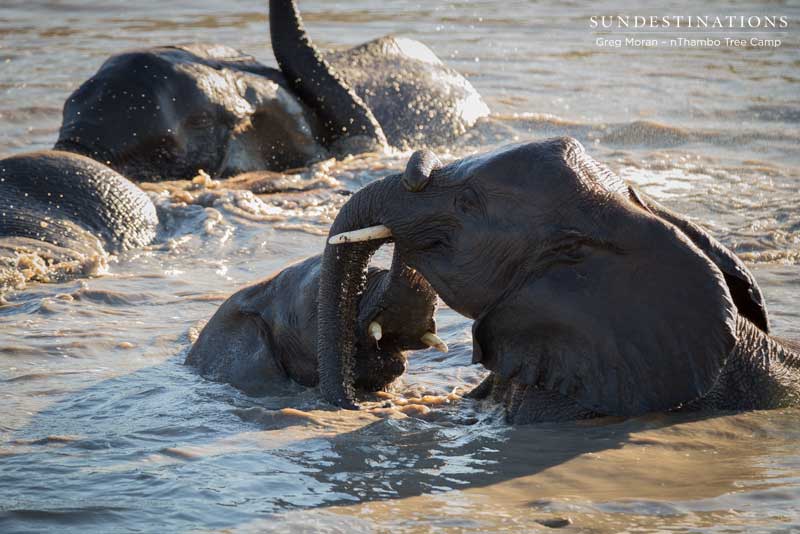
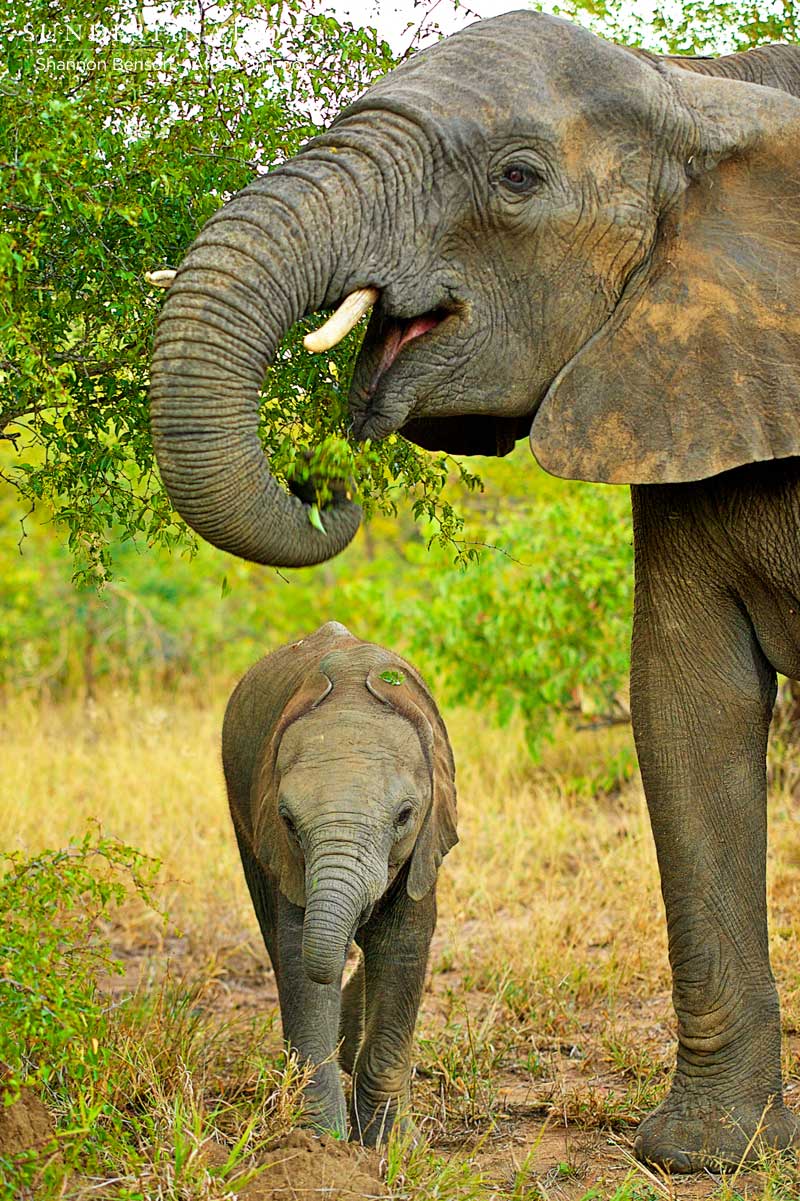
White/Black Rhinoceros
Both the white rhino and black rhino are on the critically endangered list. These prehistoric looking armoured creatures are illegally poached for their horns, which is utilised in Asian medicine under the misguided belief that powdered rhino horn cures ailments. Rhino horn has no medicinal qualities whatsoever.
Contrary to popular belief, there is no colour difference between a white and black rhino. The white rhino was initially called “weit” which means wide in Afrikaans and was named “weit” because of its wide mouth. The white rhino has a wide mouth and English settlers misinterpreted the word as meaning “white”.
The black rhino has a narrow mouth. Black rhino are more aggressive than their counterparts and have a narrower horn. Both species are found in the Kruger and have quite different eating habits. The black rhino’s narrow lip allows it to feed on trees and shrubs, while the white rhino grazes on grasses.
These endangered odd-toed ungulates are very poor eyesight but have a keen sense of smell and can detect a person from 30 metres away if they’re on the move. Another weak part of the rhino, despite its appearance, is the skin. Their skin is susceptible to sunburn and insect bites. They’ll often wallow in mud, which forms a natural barrier between their skin and the harsh rays of the sun.
If you’re on foot and you spot a rhino – stand dead still! They’ll only catch wind of you if you move.
